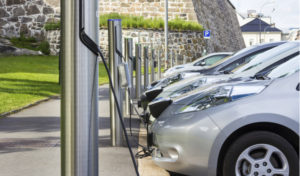
There aren’t many events that could change both the dynamics of international affairs and the discussion surrounding the environment faster than a major innovation in battery technology putting electric automobile performance on par with internal combustion engine powered machines. Not to mention that entire sectors of business would be created and possibly destroyed by such an innovation. BP is focused on the idea of battery innovation, and writes about the explosion in such technology in its corporate magazine here (abridged):
As BP announces its investment in a developer of electric vehicle batteries with the potential to charge in five minutes, BP Magazine looks at the technology today and its potential for the future with eight, AA battery-size, facts.
1. Emerging technology
We’re now looking at batteries capable of being recharged thousands of times, lasting for many years and powering a two-tonne vehicle across the length of England – all of which requires capacities 100,000 times greater than the AA cell in your TV remote.
2. Innovative applications
Batteries are … transforming expectations of what’s possible with electric vehicles (EVs).
3. The raw materials
Around 90% of today’s rechargeable battery market is based on old lead-acid technology, such as the starter batteries in conventional cars. The other 10% is dominated by lithium-ion batteries, or LiBs for short, which, at the moment, are the leading technology for use in smartphones and electric mobility.
4. Storing and releasing energy
Power density is how quickly that battery can release its energy. For example, an electric car travelling at a steady, low speed could consume around 10-15 kilowatts (kW) of power, but, for acceleration, it could require hundreds of kilowatts, albeit for short bursts.
5. Falling costs
Until recently, almost half the cost of an electric vehicle was taken up by building the battery itself. With advances in technology, that cost has dropped in the past three years by about two-thirds to around $200 per kilowatt-hour (kWh). For a top-end car, the battery cost drops from around $45,000 to around $15,000.
6. Capacity versus charging speed
Charging rates for LiB have remained stubbornly slow because of a trade-off between how much energy a battery holds and how quickly it can be charged. This means, at the moment, a battery is either designed for high capacity (energy density) that will allow the battery to last longer before recharging or, one that’s optimised for a fast charging rate. [For more, see ‘the experts’ view’ below].
7. Finding the right chemistry
Almost all four-wheel battery electric vehicles these days use LiBs. But, battery developers are playing around with the fundamentals of the technology – the cathode and the anode (between which the electric charge moves) and the electrolyte solution (that carries the charge). They are hoping to discover the right combinations that will produce greater power and energy densities and, ultimately, could be a game changer for electric mobility.
8. Fast-charging future
Start-up companies, such as BP-partner StoreDot, which is using a new type of electrolyte and nanomaterials in LiBs, could potentially provide car manufacturers with a battery that can be charged in five minutes or less.
Read more here.




